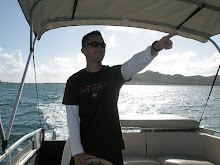Granddad was not a chef, but likewise chose to travel Europe, though from the other side of the world. Growing up in Taiwan when it was a Japanese colony. he was one of few Taiwanese to be chosen to study at the prestigious Tokyo Imperial University. Even then (before WWII), Japan apparently had close relations with Germany, and after Granddad graduated from medical school, he head to Europe, including a stint Germany, where he learned and still sings German songs. His focus was on medicine – and visiting different hospitals and clinics, and seeing how they were run. Granddad later returned to Taiwan and opened his own clinic, and became a well-known Ob-Gyn doctor.
At one particularly grand and large wedding of the youngest daughter of three from an affluent and prominent Taiwanese family, Granddad was seated at the head table, with the bride and groom and their parents. The casual observer might have wondered who my grandparents were, not being immediate family.
Mom told me later that the bride's parents had always wanted a son. When the friends had their first daughter, they decided to try again. Then they had another baby girl a little over a year later. Though they were disappointed, they were nevertheless happy. The final time, though, was an "accident" five years later. The friends had decided that two kids were enough, even two daughters. And to have a third child and, well, a girl …. They approached Granddad about an abortion.
According to Mom, that’s when Granddad told them: “Keep the baby. If you don’t want her, I’ll raise her.”
So they had the baby, but also kept her as their own. But they never forgot how Granddad had changed their minds.
Pupu platters from Abbey's wedding at the Museum of Modern Art, La Jolla (San Diego):
Wedding menu ... and Chinese wedding pastries.
- Rene Verdon 1961-1965, French; hired by the Kennedys "to infuse White House dining with French elegance" but resigned when Lyndon Johnson demanded he cook "Texas-ranch style". (C'est la vie ...)
- Henry Haller 1966-1987, Swiss; most famous meal may have been President Nixon's last: one poached egg with corned-beef hash followed immediately by one letter of resignation.
- Jon Hill 1987-1988; first American to serve as White House executive chef, but lasted all of four months before being resigning citing personal reasons ...
- Hans Raffert 1988-1990, German; did not enjoy the Reagans' penchant for "tryout dinners", preferring, instead, to stick with classical menus for state dinners (consistent with the Bushs' own desires, though not his American-born assistants).
- Pierre Chambrin 1990-1994, French; claimed to have been fired for being fat and speaking with a heavy French accent. (Au revoir!)
- Walter Scheib 1994-2005, American.
- Cristeta Comerford 2005- 2009?, Filipina; first female White House executive chef (sacre bleu!), served on Walter Scheib's staff as an assistant.
